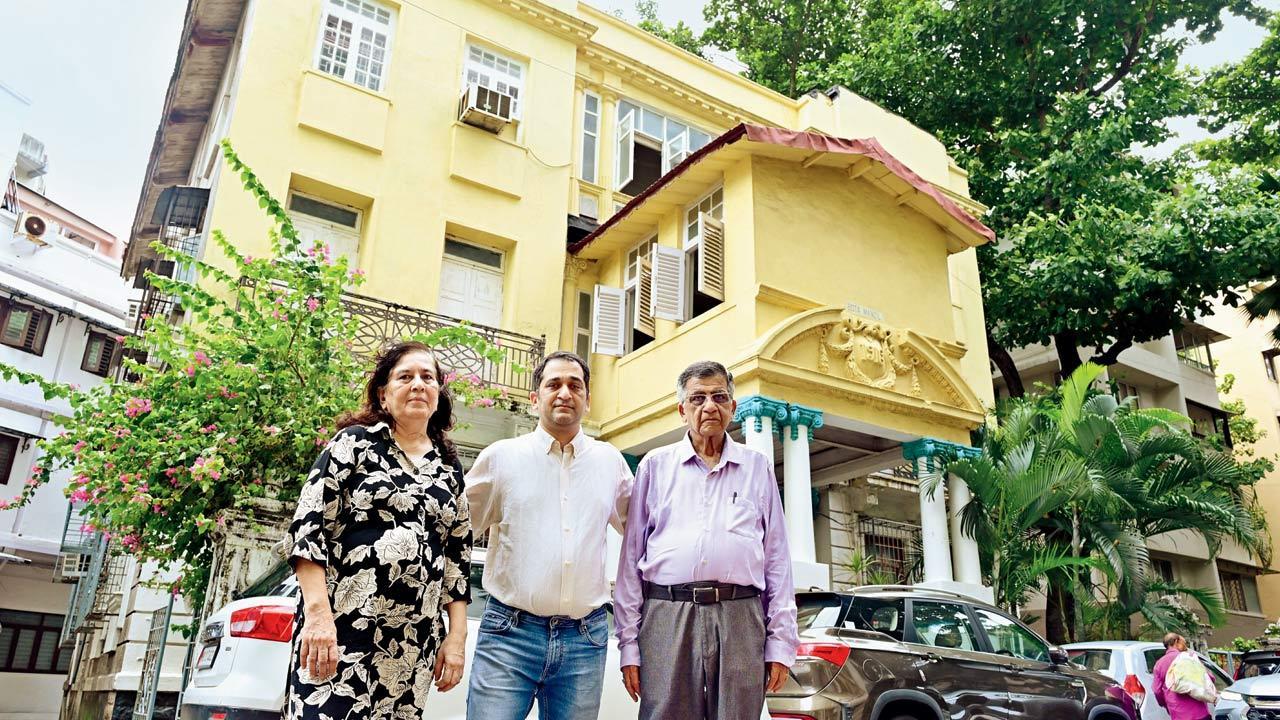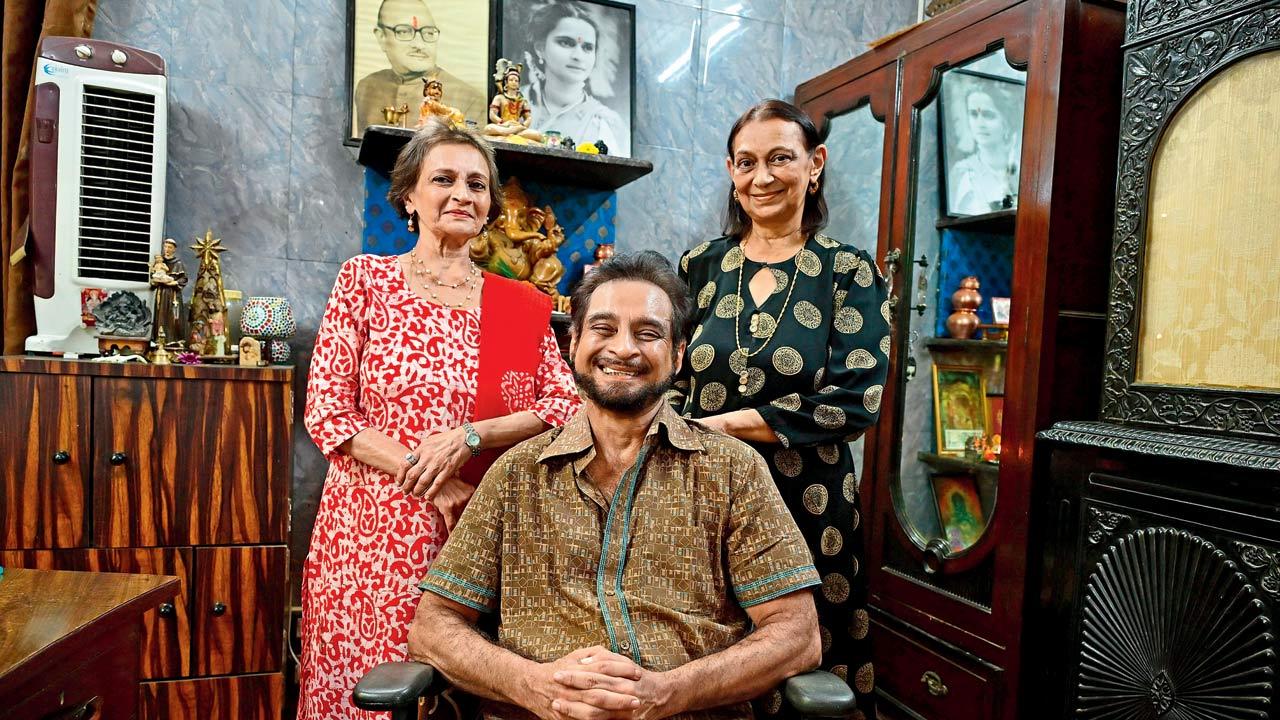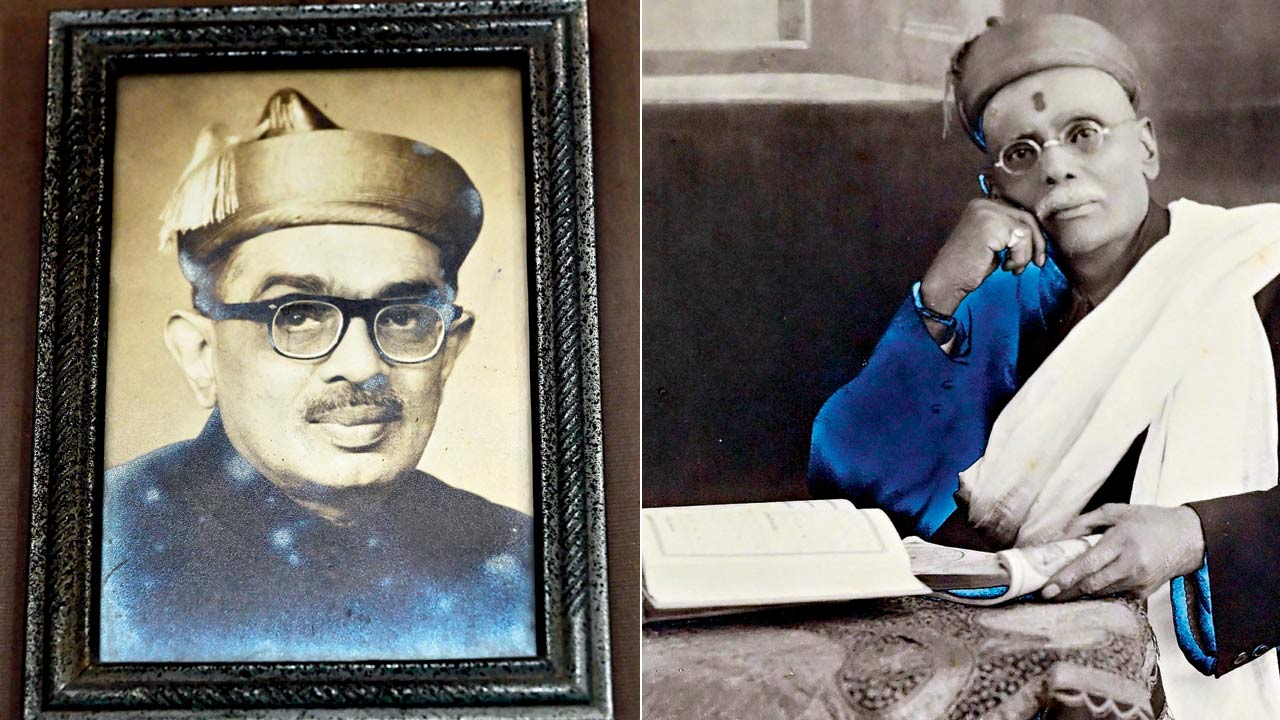Witness to generations of pre-eminent lawyers and astrologers, and a cause celebre rocking the nation, Setalvad Lane heaves with colourful history

Rashida and Allauddin Merchant with their son Naeem at Bota Manzil, standing since 1916 on Setalvad Lane. Pics/Shadab Khan
 Every lane begs to be mapped. In a city pocked pathetic by random redevelopment, several quiet gullies await a chronicler’s attention.
Every lane begs to be mapped. In a city pocked pathetic by random redevelopment, several quiet gullies await a chronicler’s attention.
ADVERTISEMENT
Setalvad Lane is a short 100-metre thoroughfare linking Nepean Sea Road to Arabian Sea shores. It acknowledges the family of Sir Chimanlal Harilal Setalvad, the barrister who was one of three Indian members in the 1919 Hunter Commission investigating the Jallianwala Bagh massacre. Sir Chimanlal’s son, MC Setalvad, journalist-activist Teesta Setalvad’s grandfather, was India’s first and longest-tenured attorney general, from 1950 to 1963, and the first chairman of the 1961-established Bar Council of India. Sir Chimanlal’s younger son, VC Setalvad, was the father of ace cricket commentator Anant Setalvad, whose baritone voice enthralled thousands of keen fans of the game.
Associated with noble intent, thanks to such men of distinction, the otherwise tranquil pathway—seldom resonating with anything but birdsong—had its somnolent air rent by three gunshots fired in a crime passionnel. The subsequent twists and turns of the case sent seismic shocks far beyond Indian borders. This happened in Jeevan Jyot, the neatly sprawled complex of flats for high-ranking consular, corporate and LIC officers, formerly the mansion of the respected Setalvads. Jeevan Jyot was built by Phirozeshah Dubash’s Anderson Dawn Company, which also designed the attractive apartment blocks Brighton and Sorrento on adjoining roads.
 Sharmila Sunny, Mangala Nath and Ravi Pandit, backgrounded by their parents’ portraits, in their astrologer-politician father Vasant Kumar Pandit’s office room at Ramkrishna Niwas
Sharmila Sunny, Mangala Nath and Ravi Pandit, backgrounded by their parents’ portraits, in their astrologer-politician father Vasant Kumar Pandit’s office room at Ramkrishna Niwas
On a dull grey morning, along with a steady drizzle I soak in the Indo-colonial elements adorning the architecture of villas like Bota Manzil and Ila Kunj. An array of verdant bushes sprayed lush by rain, on the portico of picture-pretty Bota Manzil, usher me into the living room of handicrafts exporter Allauddin Merchant and his wife Rashida. Allauddin’s grandmother Jenabai came to the 1916-built bungalow in 1941, moving with her husband Allibhoy from Malabar Hill to this sea-skimmed space aired by salt breezes they sought for health reasons.
“No one really knows but it is said that one Mohamedbhai constructed a couple of villas like Ila Kunj and Bota Manzil. Look, there’s even the initial of his name on the front grille here: M for Mohamedbhai, M for Merchant,” quips Rashida. “Our home was painted to shoot scenes for The Jewel in the Crown, with an inner room doubling as the actors’ changing room,” she adds, referring to Granada Television’s 1984 hit series.
Within minutes spill multiple, vivid versions of the murder incident from every 1950s child in the neighbourhood. Allauddin says, “Barely 10, I hadn’t seen a gun before. This smartly dressed man came out of the Jeevan Jyot gate carrying a smoking pistol. I was either in Ramkrishna Niwas or Madhav Vilas, where a few of us boys gathered to be taken for a janoi thread ceremony. We stared, amazed.”

Grandfather Rajguru Ramkrishna Pandit and Great-grandfather Rajguru Hareshwar Pandit
That smart-attired gent was, of course, Kawas Nanavati, the naval commander accused in a classic eternal triangle saga. Pumping a trio of bullets into Prem Ahuja, his wife Sylvia’s lover, he turned himself in to the authorities. For all the uproar the tragedy aroused, residents recollect “Nanavati’s calm demeanour—riding into
the lane and out in a Navy vehicle”, an old resident in Rubans Apartments observed.
How sensationally reel and real life conspire to inspire. The giant reach and recall of the infamous killing spawned a slew of Bolly reels, books and a PhD thesis too. Media hysteria kept trailing the controversial court trials and upturned verdict decades down. To the extent that cabbies readily queried, “Nanavati khoonwali gully?” to customers announcing Nepean Sea Road for a destination.
Sharing Allauddin Merchant’s amazement was Shriprakash Sardesai at the second-floor window of Madhav Vilas. “We heard noises and shouts, then spotted Nanavati coming out after the deed was done. An unforgettable sight.” His brother Sanjeev recalls, “When Jeevan Jyot was earlier the Setalvad house, Sarojini Naidu would visit the legal luminaries.” The brothers speak of their father, Vinay Kumar Sardesai, a textile chemicals manufacturer, originally from Chiplun, coming to Setalvad Lane five years before what transpired that sultry afternoon of April 27 in 1959. “Till that episode erupted, everything was peaceful. We simply heard rhythmic waves lash loud and close when tides swelled,” says Shriprakash.
 A long view of the lane
A long view of the lane
That serene imagery stays vibrant for Rashna Dhondy, from next-door Jehangir Towers, tipping the lane west-most. Once stately Sagar Villa, the waterfront property boasted horse stables at the back, a trio of handsome marble columns in front and a pair of staircases. With the Dhondys and the Bapasolas, this was home to the Currimbhoy, Mirza and Steinmetz families. Remembering the moon shimmer on the sea which switched colours bewitchingly in monsoon showers, Rashna Dhondy says, “It was thrilling to watch ships sail, from the garden fringed by coconut palms. We hurried down to play and for treats from the kind Hungarians below, of home-baked cakes and eggs hatched fresh on their farm.”
These were the Steinmetz siblings, war refugees whose gut-wrenching stories of suffering in concentration camps had moved Jamshed Bapasola immensely. His grandfather, solicitor Jehangir Bapasola, the first Indian partner in Little and Co., acquired the beautiful bungalow in the early 1900s.
“I can never forget horrifying accounts of the pain they endured and saw for myself the prisoner numbers the monstrous Nazis tattooed on their arms,” says Jamshed, visibly affected. “Clara, Ernest and Eraine narrated the nightmare experience of being cruelly separated from their young sister Piri. The older three children ended up in India and Piri in the US. They met again after almost 50 years over dinner in this home, which we were invited to. What an intensely emotional evening.”
 Sylvia and Kawas Nanavati in happier times shortly after their marriage in 1949
Sylvia and Kawas Nanavati in happier times shortly after their marriage in 1949
Clara cooked a special chicken paprika dish for that very poignant reunion meal. It came from their poultry farm, like the four kilos of bird they sent every Xmas, which the Bapasolas would roast. The late 1970s saw the Steinmetzs sell the Thane chicken farm and leave for Israel.
Other fates—fortuitous or perilous—were predicted with remarkable accuracy by three generations of astrologers. The ancestral practice of the Pandit clan from Vasai was outstandingly popular. Sitting in Ramkrishna Niwas with Sharmila Sunny, Mangala Nath and Ravi Pandit (their sister Jyotsna Maseelall is in Ohio), I learn about their father, Dr Vasant Kumar Pandit, considered the country’s first MA and PhD in Jyotish Shastra. He was assigned the honorific “Pandit Varahamihara”, in salutation to sixth-century Ujjain’s mathematician-astrologer-astronomer Varahamihara.
Vasant Kumar’s grandfather Hareshwar Madhav Pandit and father Ramkrishna Hareshwar Pandit—both given the title of Rajguru by their royal patron Sir Ranjitsinhji Vibhaji, Maharaja Jam Saheb of Nawanagar—have lent their names to the rowed buildings, Hareshwaralay, Ramkrishna Niwas and Madhav Vilas.
Renowned for their spot-on skills in fortune telling, Vasant Kumar and his father prepared horoscopes people swore by and arranged elaborate Ganesh pujas in Ramkrishna Niwas. Embarking on a political career with the Jana Sangh, Vasant Kumar was consulted by Jayaprakash Narayan, Atal Behari Vajpayee and LK Advani. “Dad was so good at astrology, Opposition party members put aside their leanings and consulted him,” says Sharmila Sunny. Filmdom followers included Suraiya, Mukesh and Krishna Shah. “Prominent Parsis as well sought his advice on mahurat dates for auspicious functions. We enjoyed attending their delicious wedding feast bhonu,” says Mangala Nath.
“Our father’s political sympathies were consciously different from his father-in-law, GV Deshmukh, our maternal grandfather,” Sunny points out. “My grandfather told him, ‘Why take advantage of my Congress affiliations. I strongly believe you should strike out on your own.’” Independent India’s first mayor of Bombay, Dr Gopalrao Deshmukh, the inaugural president of the Indian Medical Association, was physician to Gandhiji, Nehru and Jinnah.
Facing the Pandits, Sherie and Pervez Sukheswala came to Manek Abad two years after it replaced a bungalow in 1974. “It felt like living in a tree house because those were the views from every single window. Just soothing greenery with birds singing through the day,” says Sherie. My gaze falls on five surviving badam trees sway outside Jeevan Jyot beside. “That’s a beauty of a building gone to the dogs,” she rues, mincing no words.
Businessman Adi Bilimoria was seven years old when his father brought him to corner-hugging Ila Kunj, flagging off the lane. “‘Gamyu ke, do you like it?’ my
dad asked. I fell silent, having rushed in with great excitement, only to find two entire rooms messily dug up. That was a Navy-requisitioned flat. When we did shift in, it was wonderful.”
With no wall between Ila Kunj and Bota Manzil, the Ila Kunj compound entrance had two large trees. Bilimoria freed one from bougainvillea clumps choking
it and a lovely new tree sprouted to life. Leaning into the branches of another in Carmel building opposite, it formed a welcoming arch at the gully’s start.
An arboreal embrace mirrored by the friendly energy exchange in the gully till today. Hands rise in hearty Hellos across verandahs. Much in touch, neighbours are aware who is away travelling and offer care for pets and plants. And “Please don’t return it,” I hear, as an umbrella is thoughtfully pressed in my hand. All’s right for sure on Setalvad Lane.
Author-publisher Meher Marfatia writes fortnightly on everything that makes her love Mumbai and adore Bombay. You can reach her at meher.marfatia@mid-day.com/www.meher marfatia.com
 Subscribe today by clicking the link and stay updated with the latest news!" Click here!
Subscribe today by clicking the link and stay updated with the latest news!" Click here!












